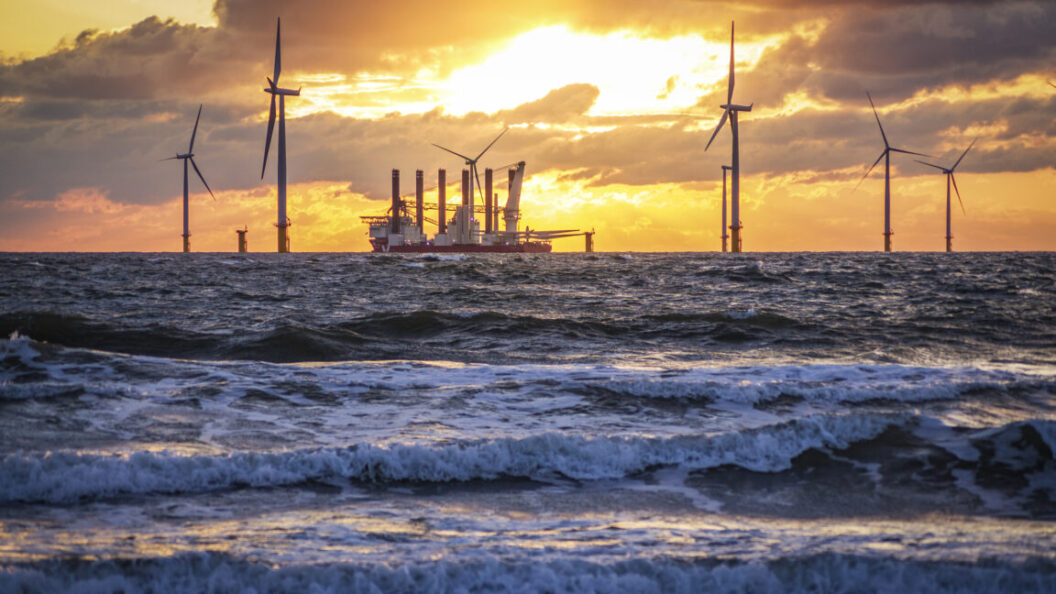Government Holds on Offshore Wind Development Amid Mixed Reports
The ongoing challenge of offshore wind development in the United States has taken another twist as the government imposes leasing holds. This decision comes despite previous assurances from the Trump administration that future leasing withdrawals would not affect existing contracts. This latest controversy raises questions about the future of offshore renewable energy in a landscape where political whims may dictate progress.
Red Flags Raised by the Executive Order
An executive order issued by former President Donald Trump has raised significant concerns over the permitting processes for onshore and offshore wind projects. The order cited "various alleged legal deficiencies," claiming that these shortcomings could lead to "grave harm." As a direct response, the Government Accountability Office (GAO) initiated an evaluation of the Department of the Interior’s management of offshore wind development.
The GAO’s findings, published recently, presented a more nuanced picture than the executive order suggested. The report identified only minor issues and proposed recommendations focusing on improving consultations with tribal leaders and the incorporation of Indigenous knowledge. It also encouraged better engagement with the fishing industry, whose interests often intersect with wind energy development.
Findings of the GAO and Key Points
Among the report’s most notable conclusions was the assertion that offshore wind development has not adversely impacted local whale populations—a point frequently criticized by opponents of wind turbines. The GAO acknowledged existing concerns regarding potential invasive species and the effects of turbines on navigational radar. However, it maintained that such impacts are variable and largely dependent on individual wind farm characteristics, suggesting that a clearer assessment will emerge as more projects are subsequently developed.
Despite the GAO’s largely positive findings, the atmosphere surrounding offshore wind continues to be clouded by uncertainty. The hold on leasing, imposed by the current administration, is expected to restrain new developments throughout Trump’s tenure, effectively prolonging a period of indecision and potential stifling of investment in the sector.
Political Ramifications
Trump’s longstanding skepticism toward wind power complicates the outlook further. The former president has expressed staunch opposition to renewable energy initiatives, a stance that has gained traction in certain political circles. This bias against wind initiatives is underscored by the reality that offshore wind companies had factored in tax incentives from the Inflation Reduction Act into their budgeting. However, the administration’s hints at potential revocations of these incentives in future budgets contribute to an overarching climate of uncertainty.
Moreover, the involvement of North Dakota Governor Doug Burgum in the leasing hold highlights the political dimensions at play. Burgum’s decision means that even with regulatory hurdles cleared, companies face the risk that their projects could be arbitrarily shut down by government actions. This unpredictability is concerning for businesses and stakeholders looking to invest in the growing renewable energy sector.
Implications for the Future
The fallout from the leasing hold and the GAO report illustrates the challenging interplay of politics, environmentalism, and economic viability within the emerging offshore wind industry. With continued political opposition, the prospects for expansive offshore wind development remain clouded. Not only are current projects at risk, but potential new investments will likely remain stalled absent a drastic shift in policy or a more favorable regulatory environment.
In conclusion, the situation surrounding offshore wind energy development encapsulates broader discussions about energy policy, environmental stewardship, and the impact of political motivations on potential economic growth. As stakeholders await further clarity on regulations and leasing opportunities, industry analysts express concerns about the long-term impacts of such uncertainty on the United States’ ability to meet its renewable energy goals. The outcome in the coming years may not only shape the future of offshore wind but will also serve as a broader indicator of the nation’s commitment to sustainable energy advancements.









